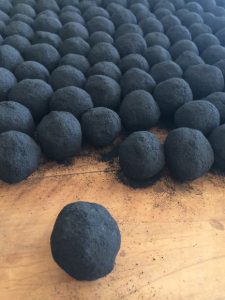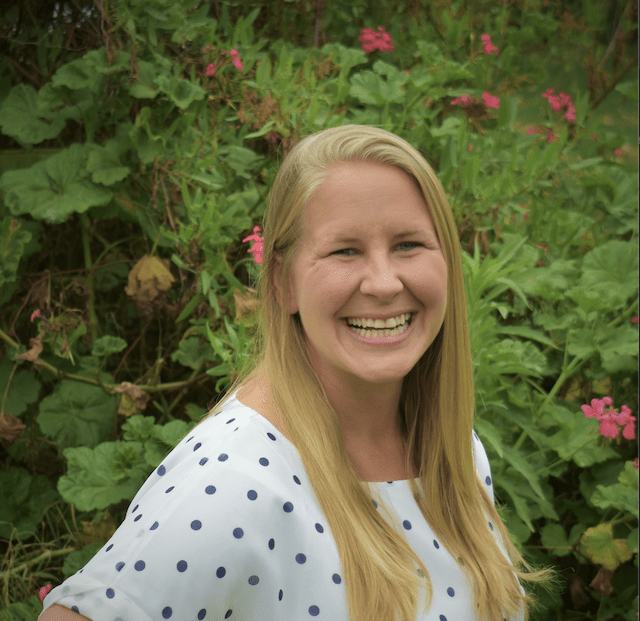Around the world few people have a clue what happens to their poo after it’s flushed away. But for environmental engineer Emily Woods, the question of managing human waste has occupied her mind since her undergraduate years.
Today, her Kenyan-based company, Sanivation, repurposes poo to create an environmentally friendly alternative to charcoal and firewood. This new approach to energy production is transforming sanitation, reducing pollution and saving trees, while establishing a new industry that could provide 50% of solid fuel needs in Kenya.
Inspired into science by her high school physics teacher, Woods studied Mechanical Engineering at the Georgia Institute of Technology. She lived and worked on a ship for a year, gaining firsthand experience of wastewater treatment. It inspired her to learn more about the environmental and health impacts of waste management in developing countries, and some of it was shocking.
According to UNICEF, for example, untreated faecal sludge that contaminates water and food has led to diarrhoeal disease becoming the second-leading killer of children under five.
It blew my mind that something so horrible – that humans have dealt with since the beginning of time – is still such an issue in so many places. As an engineer, I thought, ‘We should have this figured out!’”
Enterprising engineers
Woods joined forces with a group of like-minded friends and engineers, and headed to South America to work on some big waste management improvement ideas through an accelerator program for qualified start-ups called Start-Up Chile. Then, in 2012, she took a three-month consulting job with Kenyan non-profit organisation Water, Sanitation and Urban Poor (WSUP).
In Kenya, it is estimated that just 5% of human waste is treated before it reaches landfill sites, lakes and the ocean. “To treat faeces is expensive – it requires so much water, energy and infrastructure – most countries cannot afford to build it or maintain it,” explains Woods. With rapid urbanisation and population growth, the problem has intensified.
And while in Naivasha, a town two hours’ drive north of Nairobi, Woods recognised the pressing need for better sanitation. She convinced fellow engineer-turned-entrepreneur Andrew Foote to join her – and Sanivation was born.
The start-up secured initial R&D funding and grants from organisations such as German development agency GIZ, National Geographic, USAID, and Grand Challenges Canada.
Woods and Foote initially considered using one of the numerous solar concentration technologies, which treat human waste by heating it. But for the business to thrive, Sanivation needed to turn waste treatment plant into a profit generator, rather than a financial drain. Says Woods, “People will pay money to get rid of faeces, but most people don’t like to pay money to treat it. It’s an ‘out of sight, out of mind’ tragedy.”

The breakthrough innovation was a sustainable biofuel dubbed SuperLogs. (Before you ask, no, they don’t look or smell like poo.)
At their current Naivasha Treatment Plant the Sanivation team receives waste from exhauster trucks that have emptied local pit latrines and septic tanks. Then they blend it with other forms of biomass such as sawdust and waste from the many rose farms near Sanivation’s head office in Naivasha. The concoction is mixed, pressed, and dried into briquettes that burn twice as long as local firewood, and have up to three times the energy production.
Woods says that already Sanivation has already improved sanitation for 20,000 people since the company started its work in 2015. And it is also saving trees – a government priority for the past decade. When Kenya gained independence in 1963, 10% of its land was covered by indigenous forest. By 2009, forest area had dwindled to less than 7%, with devastating effects on the water table, climate, flooding and soil fertility.
In Kenya about 90% of all residents utilise some solid biomass form such as firewood, charcoal or pellets daily and it is estimated that more than 75% of all solid fuel sales are from unsustainable sources. And because of that deforestation has been a huge problem in Kenya,” says Woods.
Some three-quarters of Kenya’s economy comprises small-scale, semi-organised and mostly unregulated activities – collectively known as the ‘informal sector’ – which are largely fuelled by firewood sourced from unsustainable and often illegal tree harvesting.
“We’re trying to encourage companies that are buying in the informal sector to switch to our briquettes,” Woods says.
Every tonne of SuperLogs saves 22 trees. Furthermore, if you consider that a single factory can use anything from 50 to 5,000 tonnes of firewood each month, the switch to SuperLogs is a no-brainer.
There are cost and efficiency benefits for companies too. Unlike firewood, which has variable moisture content and comes in different shapes, sizes and densities, manufactured fuel is completely homogeneous. By switching from local firewood to briquettes, companies can save 30% of their fuel costs and double the performance value of their fuel.
The government’s strategy to restore the country’s tree cover to 10% by 2022 is beginning to pay off too, with Woods confident that “the solution we’re providing now is a key stepping stone to fixing some immediate needs”.
Regional demand
Today Sanivation, which has a factory outside Naivasha and employs 55 people, is meeting less than 1% of Kenya’s energy needs, but has considerable potential to grow. “If we look at just the solid fuel market, we’re talking billions of dollars a year,” says Woods, who has “big plans to scale up and replicate the model around Kenya and in East Africa”.
Right now, the most significant barrier is access to funding. The company generates enough profit to be operationally sustainable, but not enough to replicate the flagship model, which cost US$4 million.
“Currently, funding is mainly from public sources, but the sanitation budget in Kenya is minuscule and often non-existent, and a lot of those funds are still being used to grow sewerage,” Woods explains. “So the challenge is to convince governments that non-sewered treatment options and solutions are incredibly important.”
Regionally and, indeed, globally, there is a growing awareness of the need for and investment in innovative solutions and education.
The best thing we can do is not just flush it and forget it, there’s actually a lot of resources in human faeces that we can make use of.”
Follow Sanivation on Twitter | Facebook | LinkedIn
Article by Pamela Whitby
Photo credit: Photo supplied


Comments are closed.